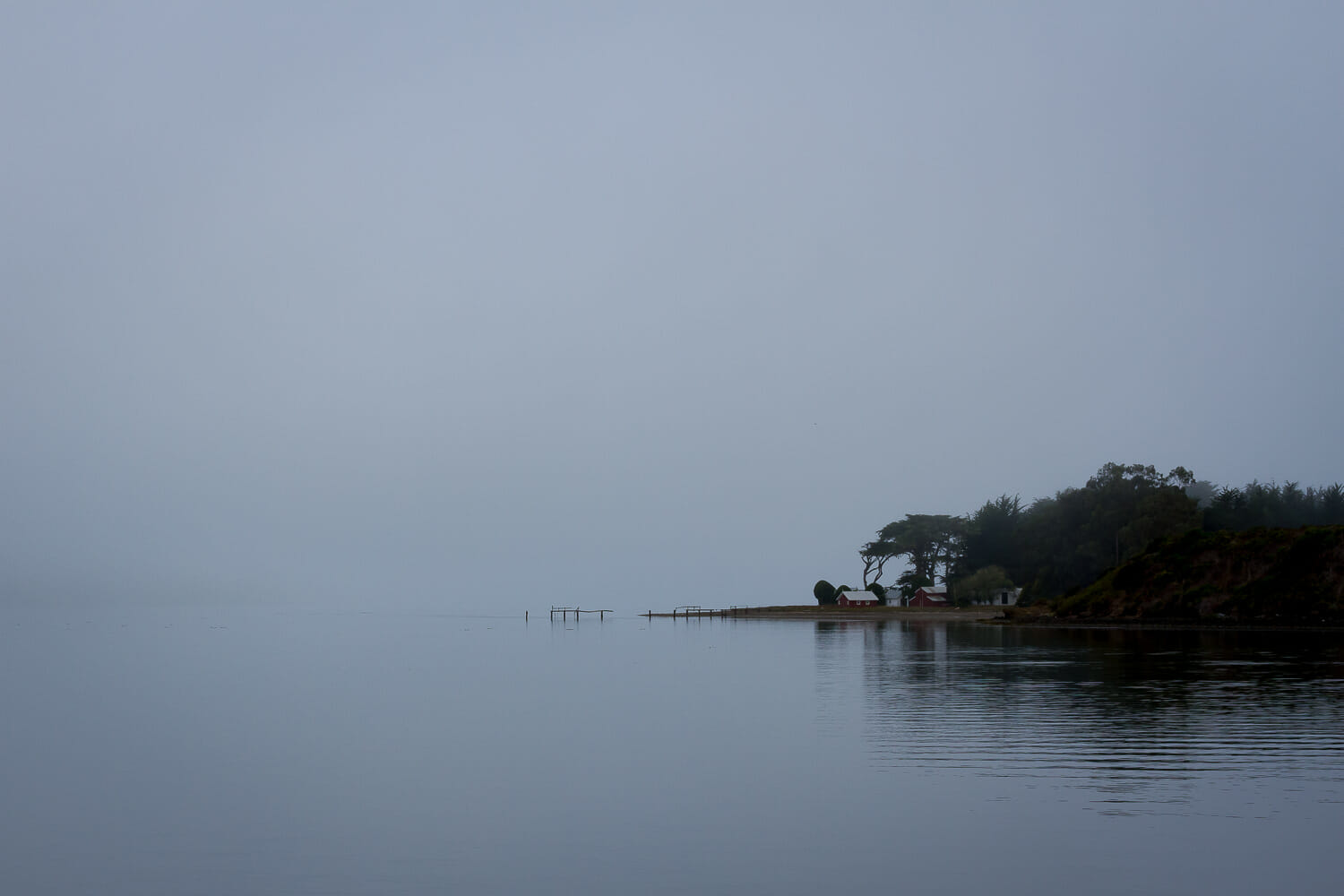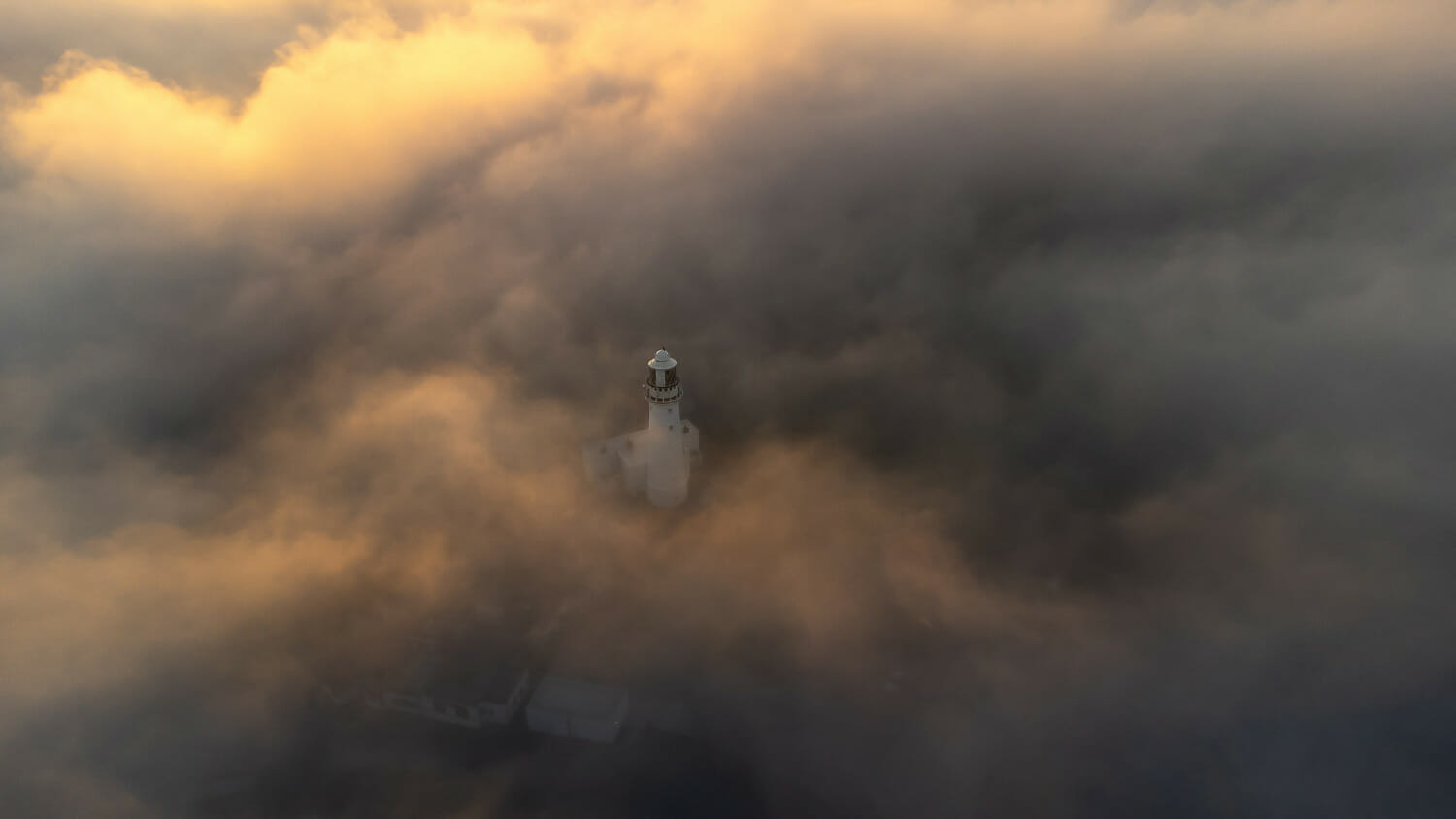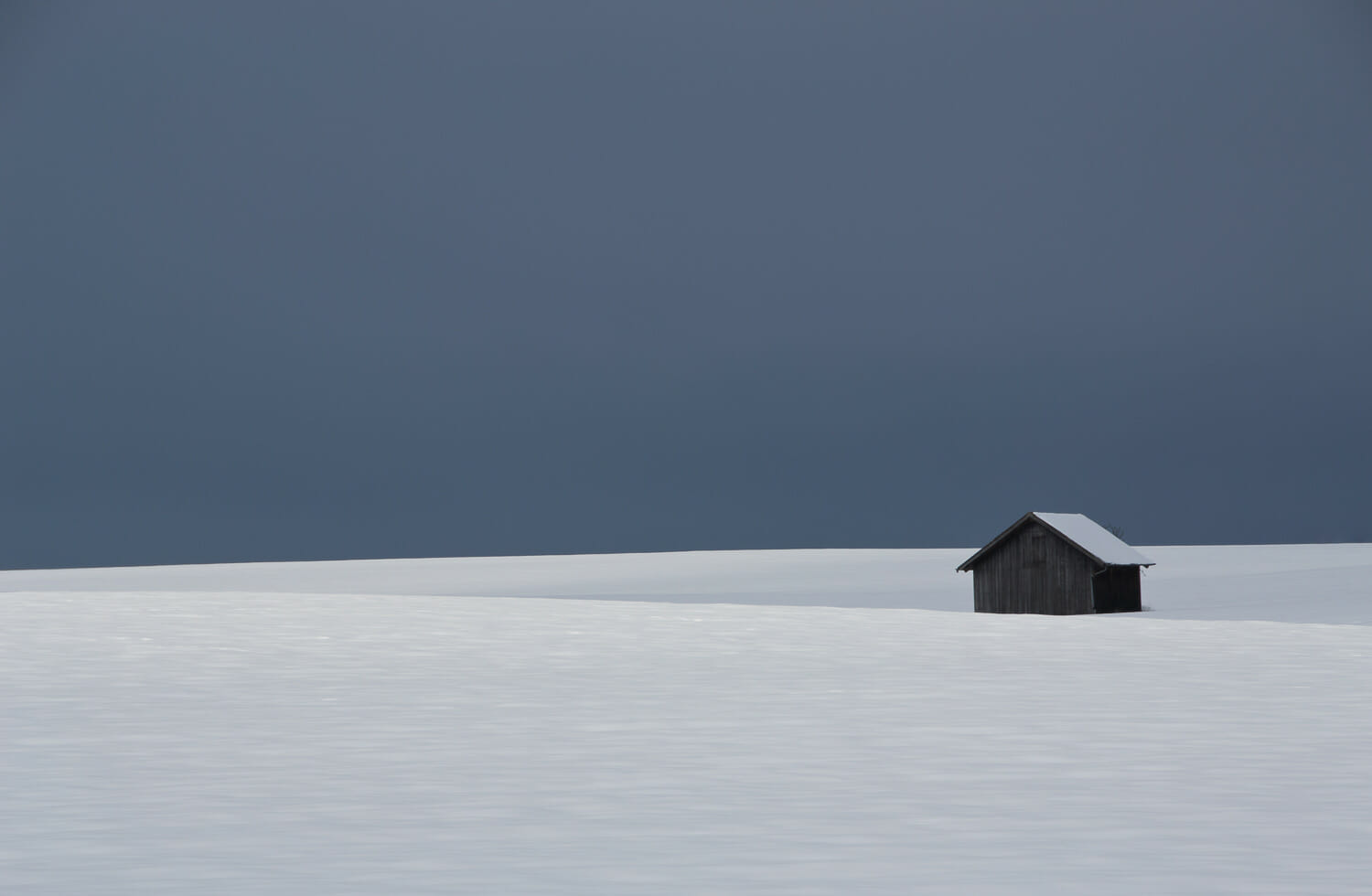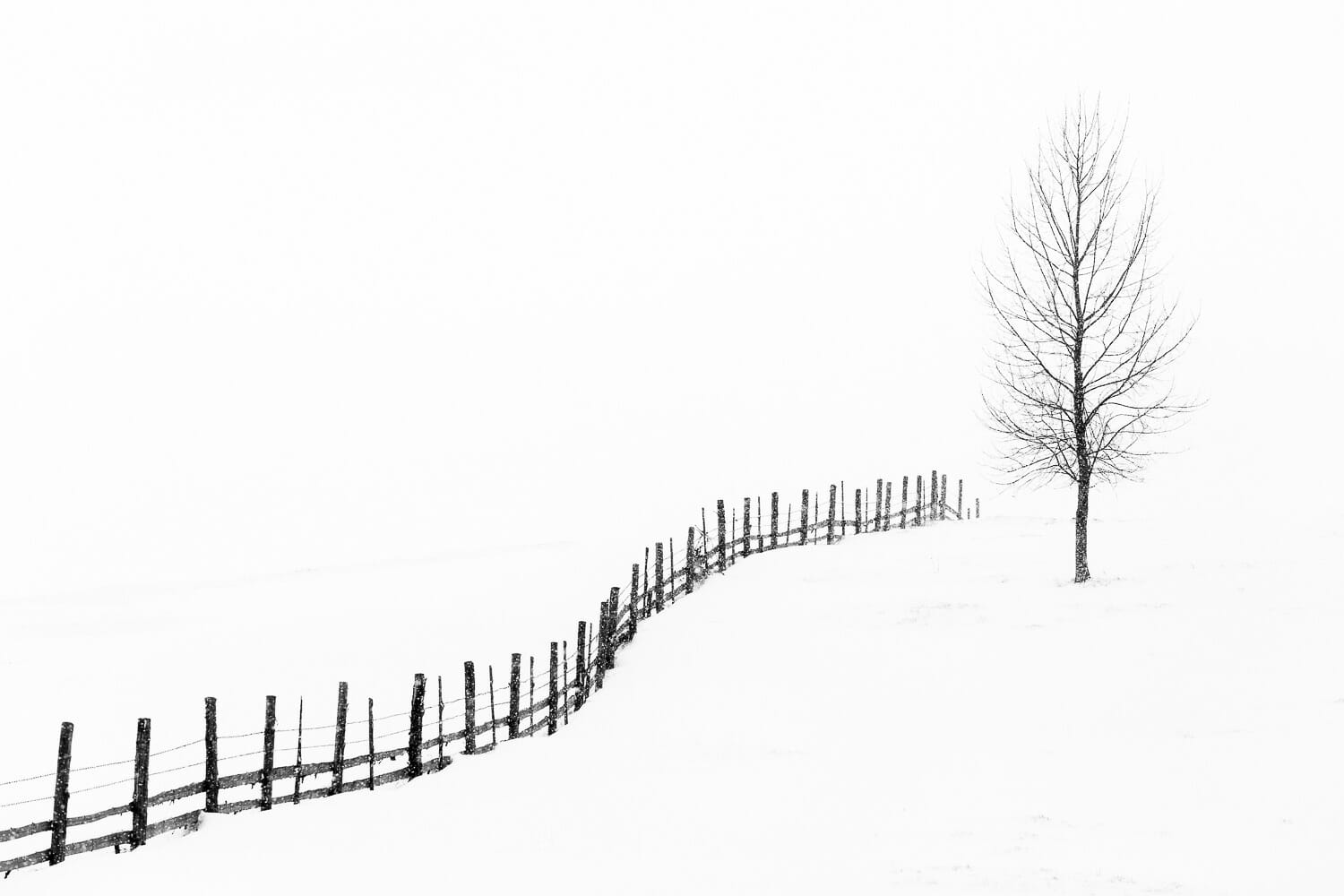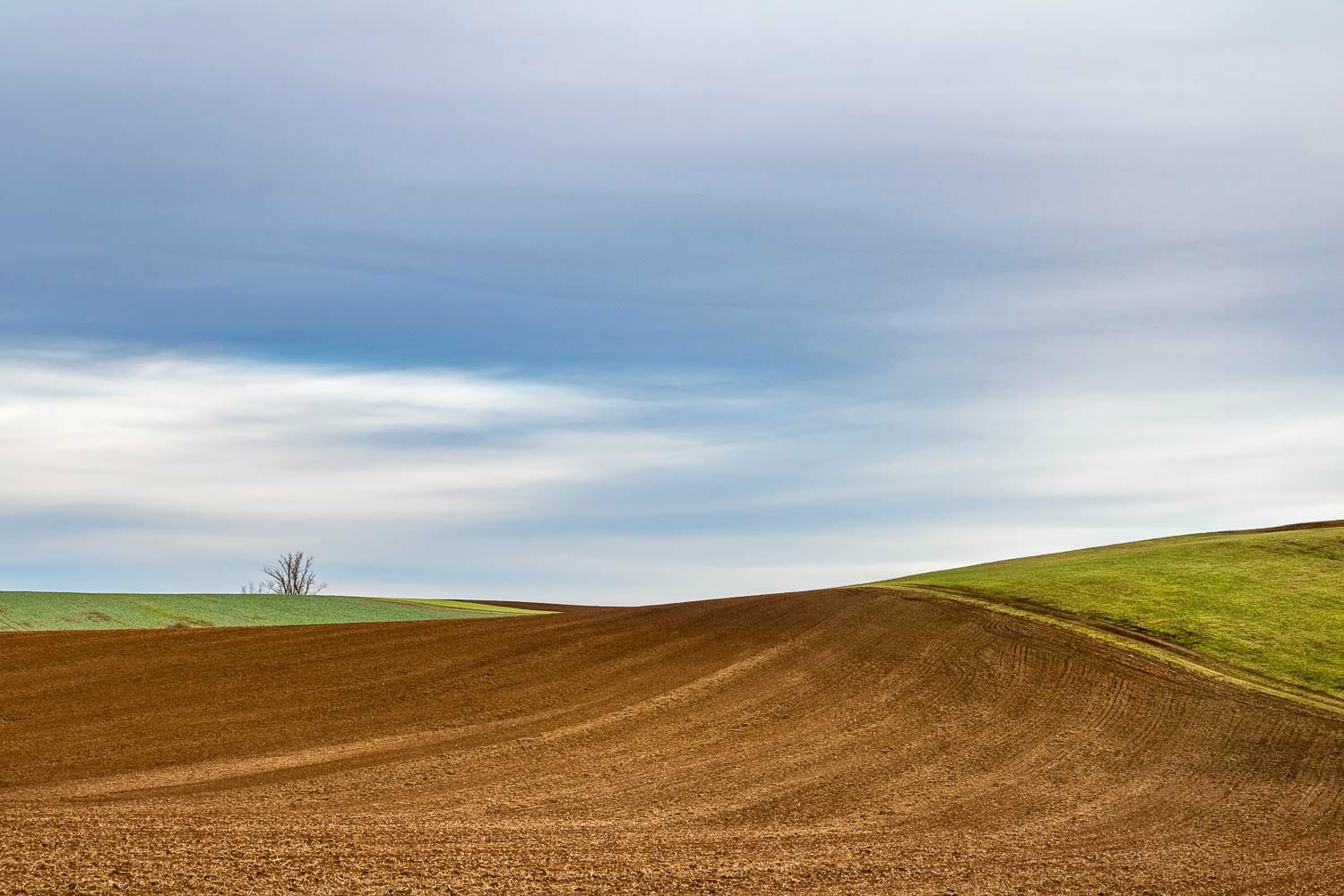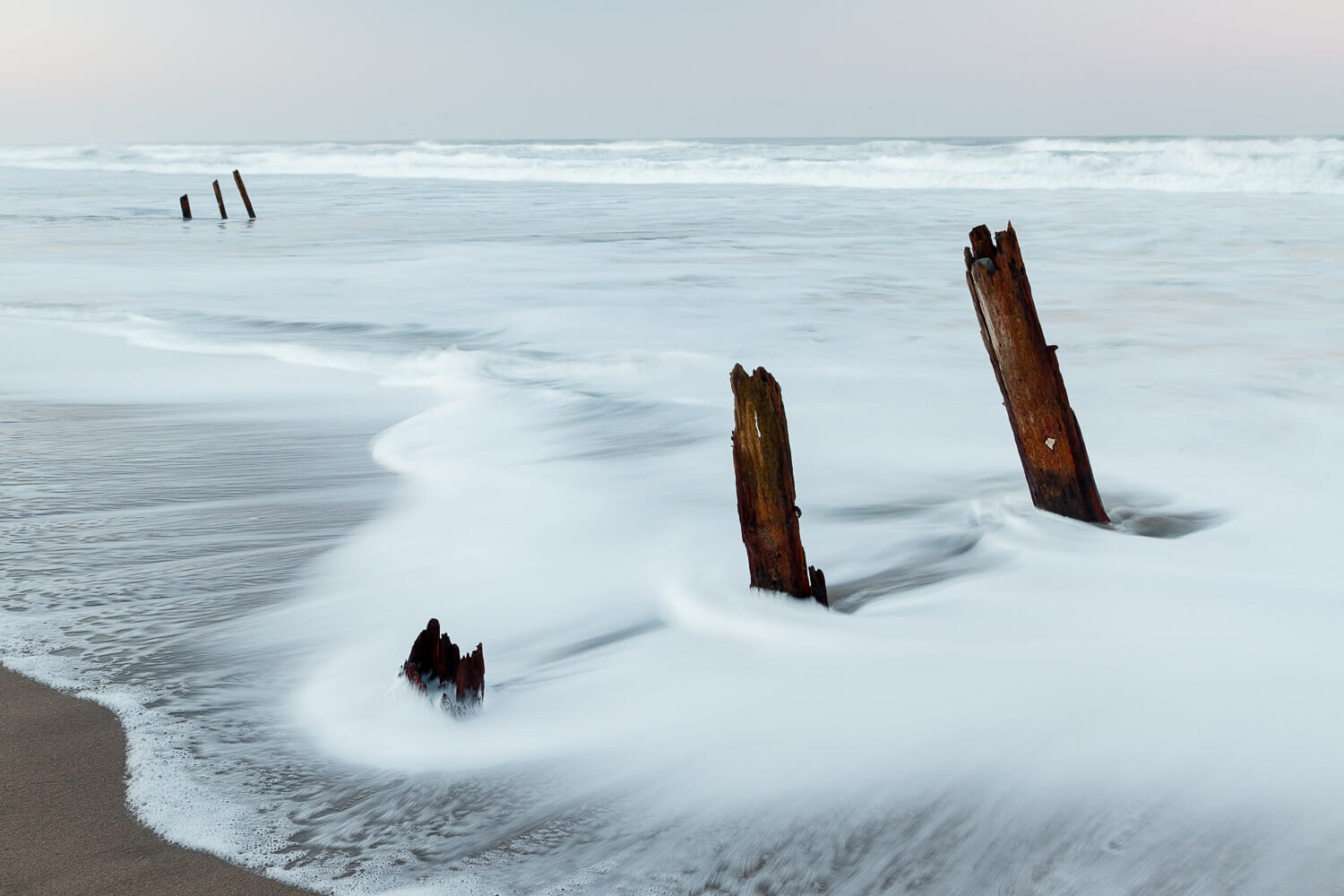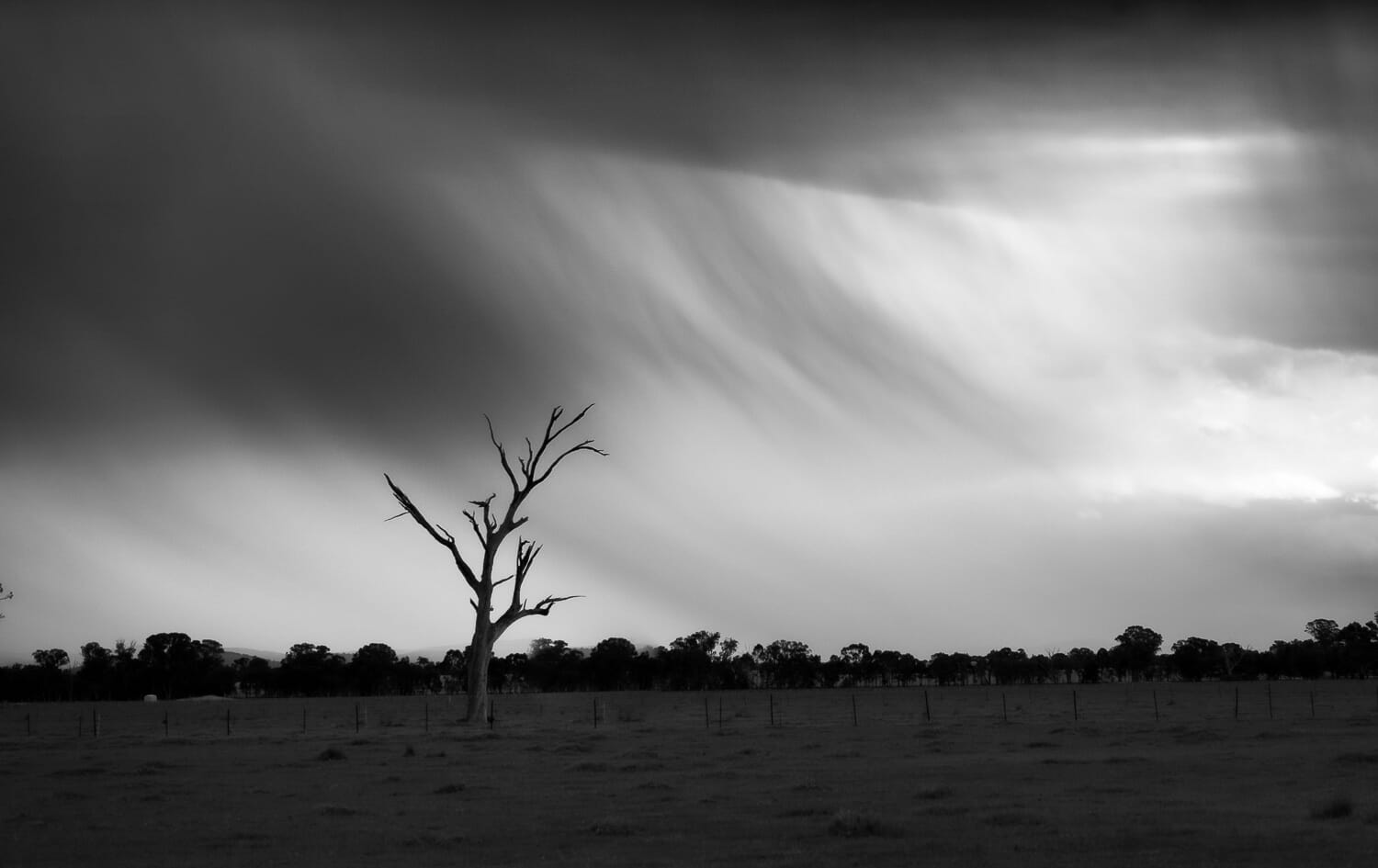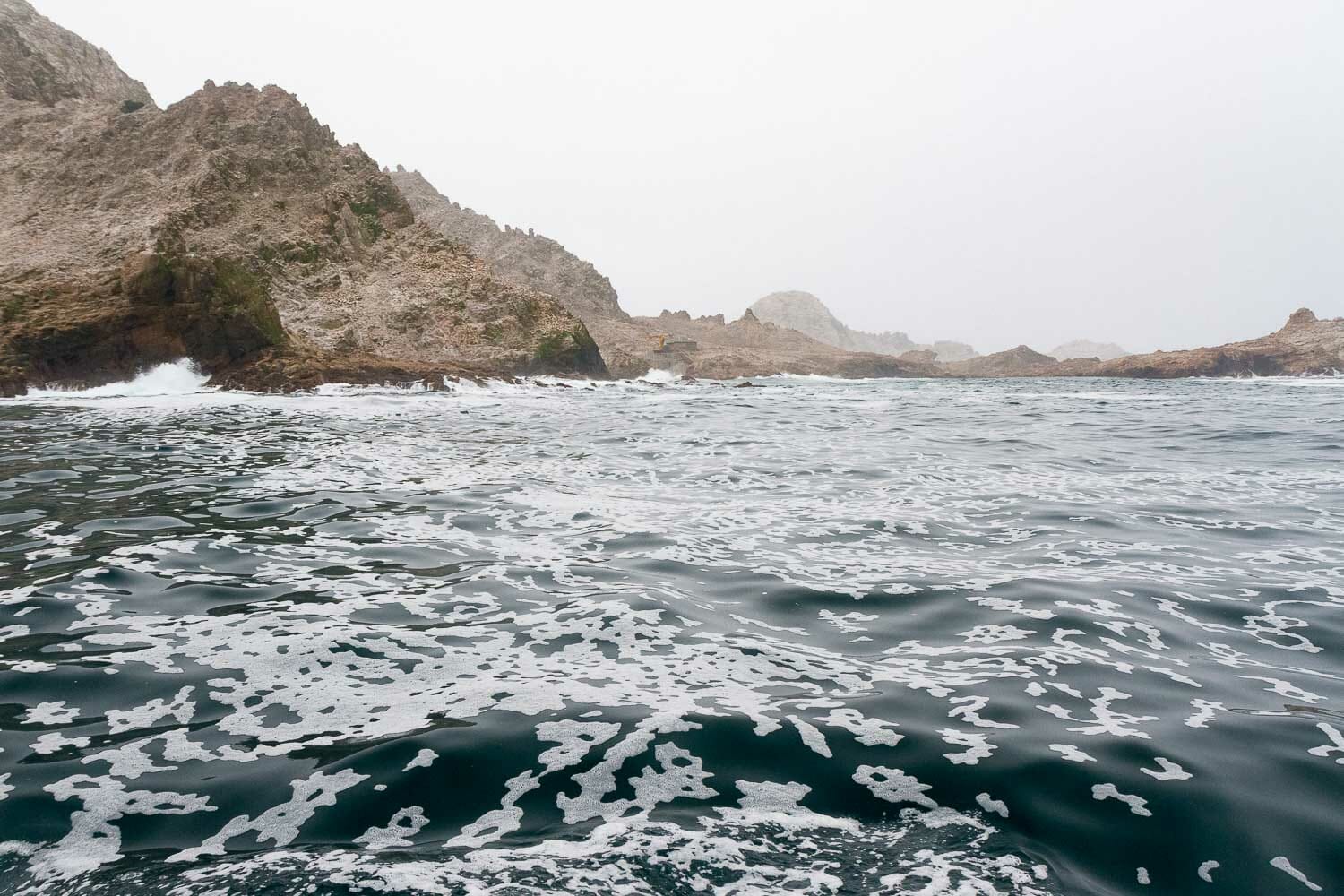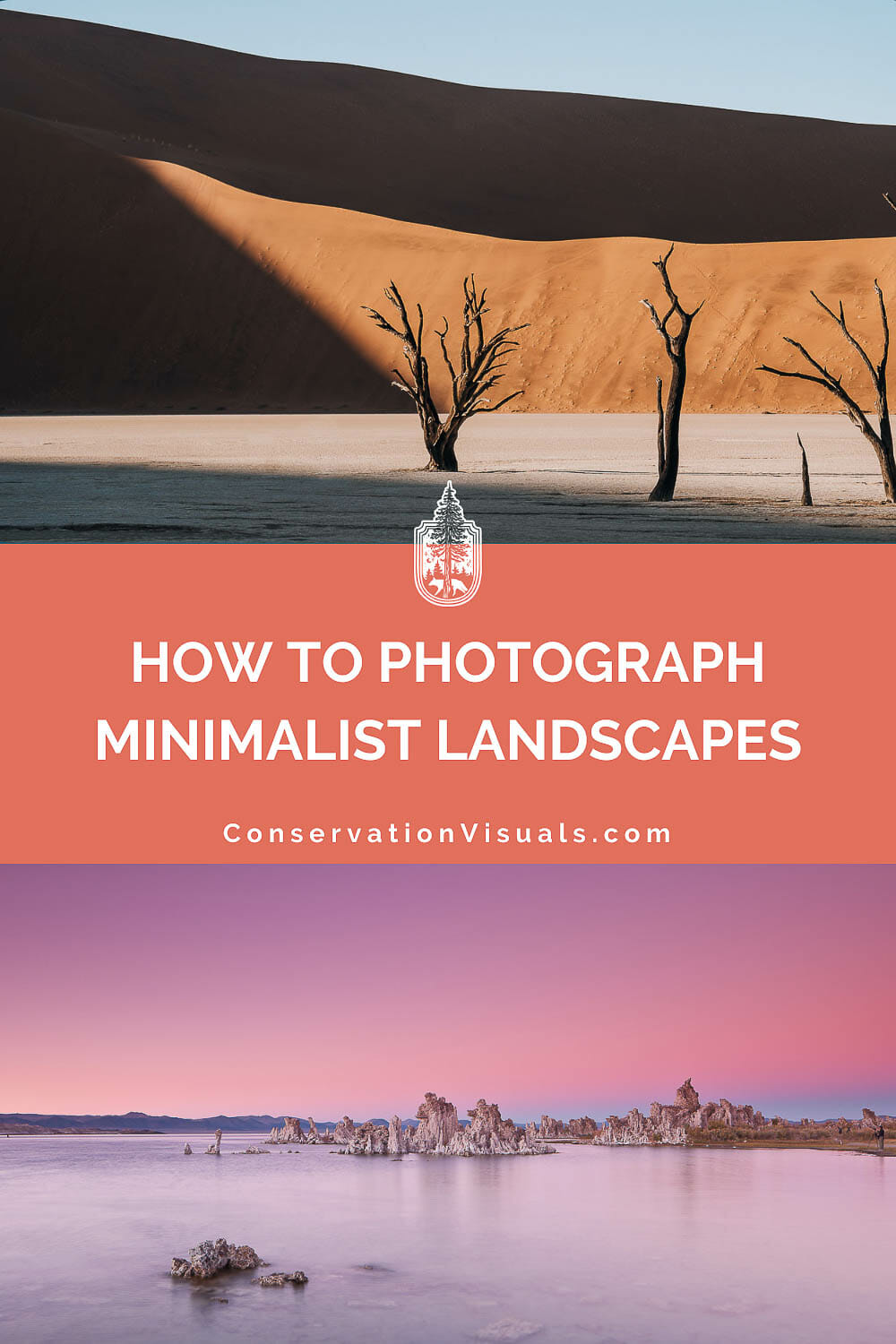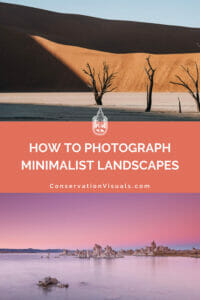Contents
- What is a minimalist landscape photo?
- Consider subject placement
- Take advantage of negative space
- Use a wide-angle lens
- Work with leading lines
- Pick a compelling focus point
- Use a simple color palette
- Use a long exposure
- Use black and white post-processing to simplify a scene
- What makes a satisfying minimalist landscape photo?
- Photographers to check out
You've seen them, haven't you? Those breathtaking minimalist photographs with their striking simplicity, where every element serves a purpose, and there's absolutely no clutter.
You've probably wondered how landscape photographers focused on this style manage to capture such purity amidst nature's chaos.
The truth is, it doesn't happen by chance; it's all about understanding the essence of minimalist photography and knowing how to apply it to landscape shots.
In this article, we'll demystify the art of photographing minimalist landscapes, guiding you through proven techniques and inspiring you with stellar examples.
Don't worry if you're just starting out or if you've previously struggled with this style – with the knowledge, tips, and encouragement we'll share, you'll soon be capturing your own stunning minimalist landscapes.
So gear up, prepare to see nature in a new light, and let's get started!
Contents
- What is a minimalist landscape photograph?
- Consider subject placement
- Take advantage of negative space
- Use a wide-angle lens
- Work with leading lines
- Pick a compelling focus point
- Use a simple color palette
- Use a long exposure to smooth elements like water, grass, or clouds
- Use black and white post-processing to simplify a scene
- What makes a satisfying minimalist landscape photo?
- Photographers to check out for minimalist inspiration
Photo: lortek/Shutterstock
Minimalist landscapes can still be dramatic. Keep your composition clean and simple, focusing on a few key elements to capture the essence of the landscape.
What is a minimalist landscape photograph?
A minimalist landscape photograph, at its core, is about embracing simplicity and finding beauty in understated scenes. It's about reducing your frame to the essential elements, allowing for a more focused and profound narrative.
By subtracting clutter, you emphasize space, color, and form, thus creating a connection between the viewer and the landscape on an emotional level.
Minimalist landscapes often feature expansive skies, solo trees, or serene water bodies, using them as primary subjects against a sparse or muted background.
The key is to find order in the natural world's chaos, spotlighting the calm amidst frenzy.
When taking this approach, we recommend following the essential tips we have listed below:
Photo: Maxim van Asseldonk/Shutterstock
When composing your landscape, consider the placement of your subject relative to the horizon line for maximum impact.
1. Consider subject placement
When it comes to minimalist landscape photography, the placement of your subject is a crucial aspect that can dramatically impact your image's overall composition and mood.
In harmony with the surrounding elements, the right placement turns an ordinary scene into a compelling minimalist landscape.
A great starting point is to consider the ‘Rule of Thirds.' Imagine your frame divided into nine equal segments by two horizontal and two vertical lines. The theory suggests placing your subject at the intersections of these lines — or along them — to create a balanced and visually interesting photograph.
However, in minimalist photography, you might find that placing your subject in the center of the frame can also yield striking results.
For instance, a lone tree in the middle of an empty field or a solitary rock in a vast sea can create a powerful sense of isolation and tranquility.
Experiment with where you place your main subject, and be strategic with where you place additional elements so they add interest rather than detract.
Photo: Jaymi Heimbuch
Create a simple yet powerful composition by employing negative space. Tip: Make sure your subject is well-defined and stands out against the negative space.
2. Take advantage of negative space
Negative space plays a powerful role in accentuating the subject and creating depth in minimalist landscape photography. It's the empty or open space around, between, or within the elements of your photo.
This space isn't just filler – it's a fundamental part of your overall scene that can dramatically enhance your image's impact. The goal is to amplify your subject by using the negative space around it.
Picture an endless, cloudless sky, a clear, rippling lake, or a vast, rolling field. These can serve as your negative space, providing a backdrop that highlights the singularity and significance of your subject.
In a successful minimalist photograph, this space really lets your subject breathe, allowing it to command the viewer's full attention without distraction. It evokes a sense of peace, solitude, and even mystery, eliciting strong emotional responses from the viewer.
Photo: Anatoliy Lukich/Shutterstock
A wide-angle lens will allow you to capture expansive views and draw attention to the subject in your scene.
3. Use a wide-angle lens
In the world of minimalist landscape photography, the wide-angle lens is your trusted ally.
These lenses offer a broader field of view compared to standard or telephoto lenses, which is beneficial for capturing expansive landscapes in all their glory.
Wide-angle lenses help you encompass more of the scene into your frame, making them ideal for creating a sense of vastness and solitude that's often associated with minimalist photography.
They allow you to incorporate more negative space around your subject, letting it stand out and tell its story in an impressive way.
However, wide-angle lenses show a BIG slice of the scene, and that can lead to clutter – the opposite of what you want. So, carefully select the elements you wish to include in your frame, focusing on those that add to the image's narrative and aesthetic appeal.
It's also worth noting that wide-angle lenses can distort perspective and make objects appear farther apart than they actually are. This distortion can be used creatively to emphasize space and isolation in your minimalist landscape photographs, adding to their visual intrigue.
🔥 Pro tip: Favorite wide-angle lenses for minimalist landscapes are 24mm, 35mm and 50mm prime lenses.
Recommended: Check out our guides to the best camera bodies and best camera lensesfor landscape photography on the market right now.
Photo: Raul Jichici/Shutterstock
This minimalist landscape highlights the power of a single leading lines to draw focus to a single element. Experiment with different perspectives to create dynamic leading lines in your minimalist landscape photos.
4. Work with leading lines
Leading lines serve as visual guides, drawing the viewer's eye through the image towards your main subject or a specific point of interest.
They create depth, motion, and perspective, adding a dynamic dimension to the static scene.
Leading lines can take various forms – from obvious paths, roads, and shorelines to subtle shadows or light streaks.
Even elements like rows of trees, mountain ranges, or waves can act as leading lines.
The trick is to identify these lines in your surroundings and frame your shot to make these lines prominent.
The lines don't always have to be straight – curved or zigzag lines can add an interesting twist and create a sense of movement.
And they don't necessarily have to lead directly to your subject – leading lines can also be used to direct the viewer's eye in a particular direction or to a specific part of the frame.
Photo: Peter116/Shutterstock
The dead trees at Deadvlei have become an iconic subject in minimalist landscape photos, thanks in large part to the ability to play with light and shadow to create simple leading lines alongside simple, stark color contrasts and a simple compelling subject. Simple = powerful.
5. Pick a compelling focus point
Your focus point is that compelling element that immediately captures the viewer's attention, guiding their gaze and setting the tone for the rest of the scene.
It may be an unusual rock formation, a striking tree, or a small detail like a vibrant flower or a textured rock that stands out in the scene.
When choosing your focus point, look for elements that tell a story, evoke an emotion, or offer something unique or unexpected.
This can make your image more memorable and impactful, drawing the viewer in and inviting them to engage with your photograph on a deeper level.
The effectiveness of your focus point is often enhanced by its surroundings. For instance, placing your focus point against a backdrop of negative space can make it stand out more prominently, heightening its visual impact.
Experiment with different focus points and angles to see what brings out the most compelling aspects of your scene.
Photo: Jaroslav Machacek/Shutterstock
To capture a minimalistic landscape, stick to a simple color palette and focus on the scene's most essential elements.
6. Use a simple color palette
We always recommend a minimalist photographer to use a simple color palette. Limiting the number of colors in your image allows the viewer to focus solely on the subject, thereby strengthening its prominence and visual impact.
Imagine the subtlety of pastel sunrise hues or the tranquil beauty of a blue sky fading into a blue ocean. These simple color schemes can help to create a sense of calm and simplicity, the hallmark of minimalist photos.
However, this doesn't mean you should entirely shy away from vibrant colors. A splash of bold color can serve as a powerful focal point in an otherwise muted scene, creating a stark contrast that immediately draws the viewer's eye.
Think of a solitary red maple leaf against a monochrome forest floor or a single golden sunflower standing tall in a field of soft, neutral greens.
The choice of color palette should complement your subject and the overall mood you want to convey.
Experiment with different color combinations, lighting conditions, and post-processing techniques to discover what works best for your unique creative vision.
Recommended: Curious about using 35mm film for your landscape photos? Check our our article “An Exploration Of Best 35mm Film For Landscape Photography” for a review of the best film choices to try out!
Photo: Jaymi Heimbuch
Embrace the beauty of minimalism with a long exposure – use the slow shutter speed to create a peaceful, serene landscape by smoothing out the water and clouds.
7. Use a long exposure to smooth elements like water, grass, or clouds
Transforming moving elements into serene landscapes is a powerful technique in minimalist photography, and that's where long exposure comes in handy.
This method involves leaving your camera's shutter open for extended periods, essentially painting a picture of time in your photograph.
In coastal areas, for instance, you can use long exposure to create a silky smooth sea against rugged rocks or a tranquil beach. It transforms tumultuous waves into a calm spread of water, which can add a tranquil yet dramatic feel to the image.
Moreover, it can turn fast-moving clouds into smooth, streaked canvases, enhancing the mood of your image.
Consider sand dunes for another perfect example. The wind often causes a flurry of sand particles that, when captured using long exposure, gives an impression of misty waves flowing across the dunes. This not only accentuates the ethereal beauty of these landscapes but also reinforces the minimalist aesthetic.
Photo: Ariana May Photography/Shutterstock
The beauty of minimalist landscapes lies in the simplicity. Try converting your shots to black and white to emphasize textures, lines, and shadows for a truly stunning image.
8. Use black and white post-processing to simplify a scene
Black and white post-processing is a powerful tool for compelling minimalist photos.
It allows for a focus on composition, texture, and form, stripping away the distractions of color and letting the raw beauty of the landscape shine through.
Transforming your image into black and white can add a timeless, classic feel while enhancing the dramatic contrast between the darkest and lightest elements. This contrast can create a striking visual impact, giving your image depth and a sense of three-dimensionality.
Pay special attention to the tonal range when working in black and white.
A rich array of grays provides the detail that is so crucial to black-and-white photography. Good black-and-white conversion will retain these details, ensuring that your image has depth and dimension, even without color.
Photo: Jaymi Heimbuch
To capture a satisfying minimalist shot, remember to include minimal elements and focus on the negative space
What makes a satisfying minimalist landscape photo?
Minimal landscape photographs capture the essence of a scene, distilling it to its most basic elements to create a striking, impactful image. It's not easy to pull off!
A satisfying image incorporates a sense of balance, whether it's through symmetry, color harmony, or a balanced distribution of light and shadow.
This equilibrium can create a sense of calm and tranquility, enveloping the viewer and drawing them deeper into the image.
But the beauty of minimal landscape photographs lies not just in their simplicity but also in their ability to evoke emotion.
Stripping a scene down to its core elements can reveal a hidden narrative or a subtle beauty that might otherwise be overlooked.
Whether it's the stark, haunting beauty of a lone tree in a snow-swept field, the peaceful symmetry of a quiet lake at sunrise, or the dramatic interplay of shadow and light on a mountain range, minimal landscape photography taps into the raw, unfiltered essence of nature.
It invites the viewer to pause, to look closer, and to lose themselves in the pure, arresting beauty of the landscape.
Less is more, and that careful compositional editing is where the challenge lies in this niche.
Photo: Jaymi Heimbuch
Embrace the beauty of nature's minimalism and find inspiration in its quiet simplicity. Tip: Go on a nature walk and pay close attention to your environment, looking for those minimalist scenes.
Photographers to check out for minimalist inspiration
When it comes to a minimalist approach in nature and landscape photography, many incredible photographers bring the aesthetic into their work in an inspiring way – whether it's wildlife, landscapes or people as their subjects.
Here are a few folks well worth exploring to fire up your creativity:
❂ Michael Kenna
Known for his black and white landscapes, Kenna's work is a masterclass in minimalism, often utilizing long exposure times to create hauntingly beautiful images that linger in the mind long after viewing.
❂ Camille Seaman
An American photographer known for her minimalist ice landscapes and portraits of storm clouds, Seaman's work showcases the beauty and fragility of our planet. Her images are a powerful testament to the grandeur and impermanence of nature.
❂ Edin Whitehead
A renowned New Zealand-based environmental scientist and photographer, Whitehead's work is a perfect blend of science and art. She captures the minimalist beauty of natural landscapes and wildlife – primarily seabirds – with a deep emphasis on conservation and ecological significance. Her photography invites viewers to see the world from a new perspective, inspiring a deeper appreciation for the natural world and its intricate ecosystems.
❂ Michael Levin
A Canadian photographer who has won numerous awards for his minimalist photography, Levin underscores the power of simplicity through his Zen-like approach to capturing landscapes.
❂ Ed Burtynsky
Celebrated for his large-format photographs of industrial landscapes, Burtynsky's minimalistic approach highlights the scale and severity of human impact on the environment.
❂ Annie Griffiths
One of the first women photographers to work for National Geographic, Annie uses her talent to advocate for social and environmental causes. Her minimalistic photography often focuses on the simple, poignant moments in nature, effectively drawing attention to pressing conservation issues.

